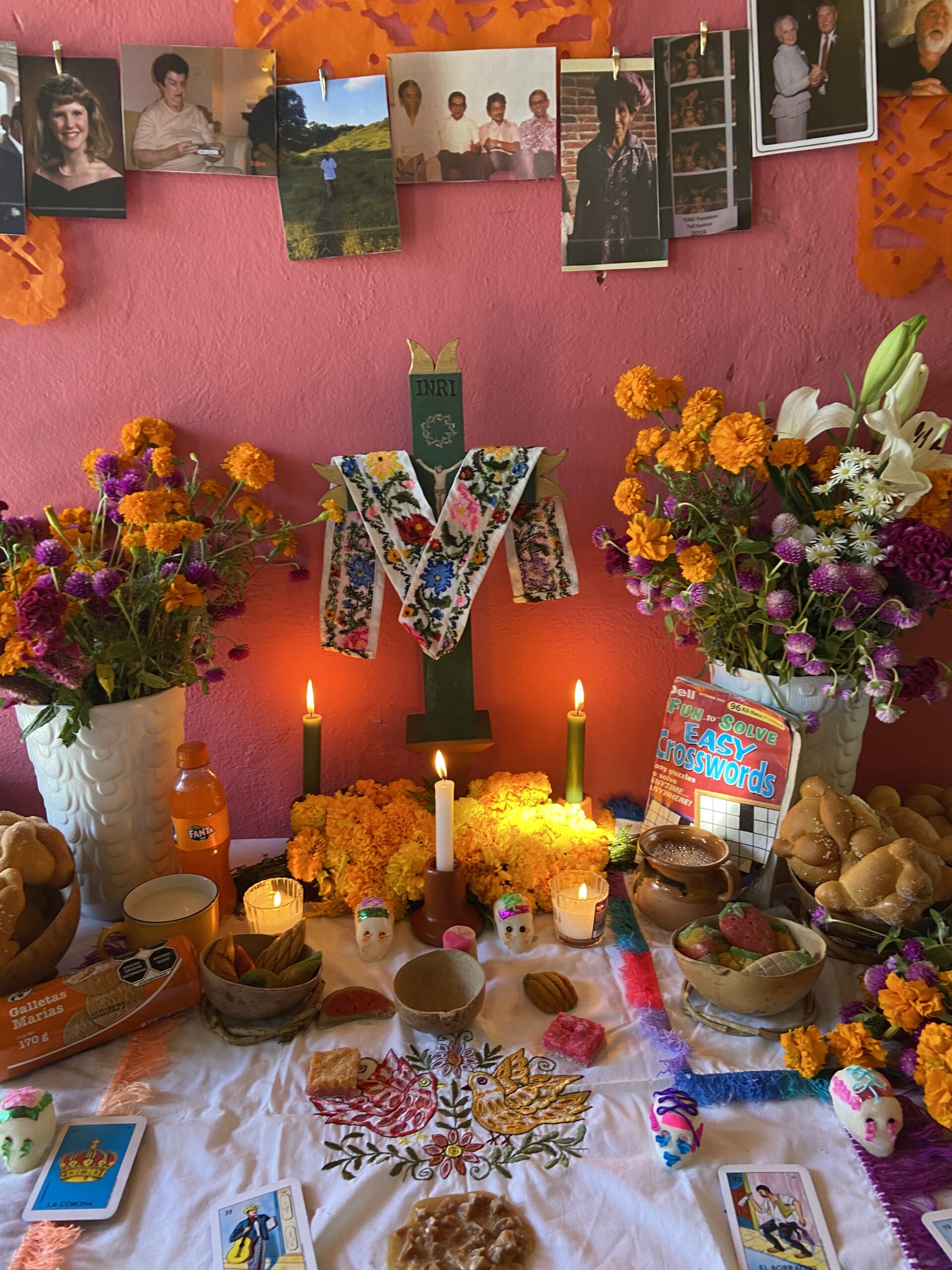
Our dead are visiting!
It is Janal Pixan season! Janal Pixan is what Day of the Dead is called in Yucatan, and it comes from Janal (sometimes spelled Hanal), which means food, and Pixan, which means soul: food offerings for our difuntos, or souls of our dead. November 1 and 2 have for years been festive days for my family because we prepare our homes with food, drinks, and positive vibes so that our ancestors have a warm home to arrive at! This year, Día de los Muertos (in Spanish) is especially special for me because it is the first year that I can dedicate an altar to my grandmother, who passed away last November. Sadly, I am not with my family to spend this heartwarming moment, but the IFSA program planned activities for all of us to celebrate this special event properly!
We first took a trip to the local market to purchase products for our altar. I bought coffee and Mexican chocolate to prepare and dedicate to my grandmother because she grew and produced coffee and chocolate with my family in her town in Oaxaca. It is important to note that Day of the Dead does not have a universal form of being celebrated, as the US may make it seem. For example, the set-up of the altars is different in distinct states of the Mexican nation. In Mexico City and other large cities (like the Center of Mérida), the altars have different levels / tiers that represent different divisions that the souls must pass through after death. In smaller, home altars, though, some people don’t include these levels – the altar we (the students) set up at IFSA, did not have any tiers, and neither does the altar my family back home sets up. Another difference I’ve noticed is that in Yucatan, the pan de muerto (bread of the dead) that is eaten and shared is the same one eaten in the center of the country (Mexico City). It is round, fluffy, and decorated with powdered sugar and “bones” made out of dough. In Oaxaca, on the other hand, our pan de muerto has less sugar, is also called “pan de yema (egg yolk)”, and is shaped like people with tiny faces! Both are delicious and serve similar purposes, but are pretty distinct.
Building the altar was also lots of fun! The aromas of drinks, food, and flowers filled up the IFSA center, and music by iconic deceased Mexican artists like Juan Gabriel and Selena Quintanilla brought even more joy to the environment. Another thing I learned is that the “traditional” cempazúchitl flower (marigold) that is used on altars in other Mexican states does not grow in Yucatan. Instead, Yucatecans resort to a native marigold and x’te, a violet-colored globe amaranth, for their altars. Both are beautiful and add a gorgeous range of colors to the offering.
Lastly, while conversing with my host family and friends, I realized that there are many people in Mexico who do not believe that our dead actually return on November 1 and 2 to visit us on Earth. My host father, specifically, said that his scientific research makes it difficult for him to imagine our family members’ souls entering our homes and consuming the offerings we made to them. He explained, however, that he still enjoys the holiday because we get to remember our loved ones in a sweet manner and are given an opportunity to spend close moments with our dear ones that are still alive with us on Earth. I think that this is a great example of the cultural importance that Día de los Muertos / Janal Pixan has on Mexico and its people, and how it is something that should be respected.
